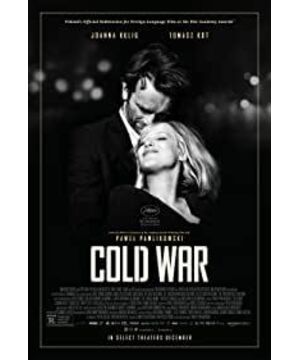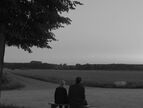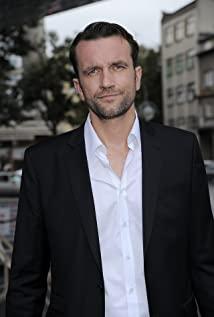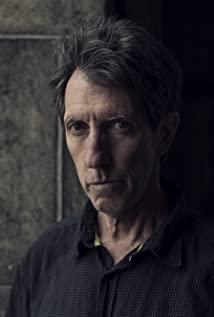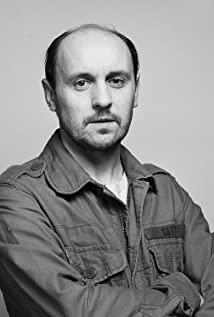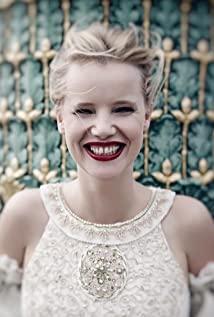Although only half of 2018 has passed, the film "Cold War" directed by Polish director Paul Pavlikowski will be one of the best black and white films of 2018. I am afraid there is no more suspense. Not long ago, this film just won the best director award in the usual sense at the Cannes Film Festival and became the European film with the most awards in the main competition unit. Although the entire film lasts less than 90 minutes, the extremely prominent image quality still makes it favored by the jury, and it has become a major player in the fiercely competitive "New Year".
The film tells the love story between a Polish male musician and a female singer before and after the fall of the Iron Curtain in Europe and the beginning of the Cold War. The two went to France one after another in search of freedom, and then moved to Italy, Yugoslavia and other countries. However, due to various reasons, they separated and reunited, and finally returned to Poland. However, it is easier to go out and come back: they will face a more severe political environment, and the love and marriage between them will also face more severe tests.
If you know a little about director Paul Pavlikowski, it’s hard not to compare this "Cold War" with the last film he directed, "Nun Ada", which won the Oscar for Best Foreign Language Film. ( Ida ) Compare-both are black and white films, both set in Poland; if you don't carefully distinguish, the image quality of the two films seems to be very similar, and it can even be said that the former is a sister of the latter. However, objectively, there is still a big difference between the two films.
Such as the most obvious stories and structures. Although a large part of the story of "Cold War" is still set in Poland, it is more concerned about the whole process of the hero and heroine from Poland to Paris, France and back to Poland. Therefore, the film has a very obvious three-stage structure. This makes the whole story more regular than the previous one. Among them, Paul Pavlikowski consciously gave two very different image styles and textures to the two stories in Poland and France, thus clearly separating the two cultures and two consciousnesses. Form and two camps, and this kind of change is impossible for "Sister Ada" set in Poland.
Specifically, the tone of the Polish part of the film is obviously richer. The main color of gray suggests the depression and gloomy atmosphere after the transformation of Polish society at that time. At the same time, there are a lot of fixed long shots in this part, and time and space are completely frozen in the frame. , The character cannot escape at all. On the other hand, in Paris, there are obviously more moving long shots, and the characters often exist outside the paintings, and a free and romantic urban atmosphere is almost overflowing. On the other hand, the images in Paris are also higher in contrast and clear in black and white. The characters are often separated from the environment, which shows the protagonist's incompatible and strong sense of alienation from the environment. All these techniques show the audience that the "cold war of love" between the hero and the heroine is certainly the most heartbreaking part of the film, but the difference and separation between the two image styles deliberately made by the director really makes the "cold" "cold." The core meaning of "war" is expressed.
The most interesting thing about "Cold War" is that the director Paul Pavlikowski did not simply treat Poland and France, Eastern Europe and Western Europe as binary oppositions, but completely presented Polish artists in a foreign country. Living situation. As the female singer said, although the male musician who escaped from Poland gained freedom to a large extent, he was "no longer a man", his life became decadent and he became emotionally ambiguous (really black). A Frenchman), there has been a distortion of style in art. In order to gain recognition from the Parisian art world, he not only changed himself, but also forcibly changed his lover. All in all, the simplicity of Polish folk songs has disappeared, and the pure love for music has gradually disappeared; art that has been separated from the cultural foundation has lost its vitality, and people in exile are experiencing the dual torment of creation and life. In that case, what exactly is freedom? Where is that kind of "real freedom"? This is the final problem faced by the hero and heroine, and it also points to the tragic ending that they can never escape and have nowhere to be at home.
Although it is difficult to know to what extent the director used his and his parents’ life experiences when creating "Cold War", there is no doubt that he is very concerned about the experience of the male protagonist in the film—— His parents were both Polish intellectuals. He left his home country at the age of 14, then lived in Germany and Italy for a period of time, and finally settled in the UK. In his early years, Pavlikowski also directed several films in the context of British society, which received a good response, but it was a completely different "Sister Ada" depicting his hometown of Poland. The honor of the Oscar for Best Picture has even become a turning point in his creative sequence to some extent. It should be said that Pavlikowski is consciously or unconsciously regaining certain cultural foundations and bloodlines that he has always lost (for example, the dilapidated church that appeared in "Cold War" is related to Polish director Andy Vajda’s In "Embers and Diamonds," Jesus is like an upside-down church in the same line), and this nationality is perhaps the most important reason why he was able to form his own image style and finally show his prominence in the international film scene.
For the author, the appearance of "Cold War" does mean the perfection of an image style—any audience will be impressed by Pavlikovsky’s control of black and white images—but on the other hand, the narrative Further enhancement actually reduced the plot tension of Pavlikovsky-style films. In "Sister Ada", this kind of tension exists in a large amount of blank space-the blank space of the plot, the blank of the composition, the blank of the language, the blank of the action... all these blanks complement each other and give The audience's rich imagination and thinking time together constitute the core energy of what Paul Schrader calls "slow-cinema". And "Cold War" just missed a certain kind of "completeness": everything is clear, but there is no unpredictability, until the end of the wedding of the two, the shock that is scattered everywhere in "Sister Ada" Reappeared, but it was obviously too late.
Of course, artistic creation is gradually perfected in the pursuit of a balance between content and form. Pavlikovsky’s exploration this time is certainly not a failure. He climbed from one peak to another, and from then on, there may be no smooth road in front of him.
View more about Cold War reviews


